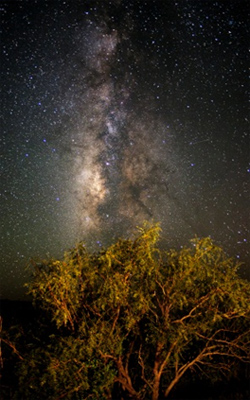Another Texas Park Gets Dark Sky Designation
Thursday, January 11th, 2018This is Passport to Texas
Good news for star gazers: Big Bend Ranch State Park is the latest Texas State Park designated as a Dark Sky Park by the International Dark-Sky Association—or IDA.
It joins neighboring Big Bend National Park to form one of the largest contiguous areas under dark-skies protection in the United States.
This designation is an important step forward in the conservation of some of the darkest night skies remaining in the lower 48 states.
Now let this sink in: With the inclusion of Big Bend Ranch State Park , we have secured the protection of natural nighttime darkness in Texas over an area larger than the U.S. state of Rhode Island. Mind blown, right?
Big Bend Ranch SP, located in the remote and rugged Trans-Pecos region, is known for giving visitors an untamed, wilderness experience. Preserving the dark sky is key to that experience and something all visitors treasure.
BBRSP joins Copper Breaks State Park, South Llano River State Park and Enchanted Rock State Park in holding the prestigious IDA designation.
Find more information about the Dark Skies program on the Texas Parks and Wildlife website.
That’s our show for today… Funding provided in part by Ram Trucks. Guts. Glory. Ram
For Texas Parks and Wildlife…I’m Cecilia Nasti.






 Passport to Texas is a
Passport to Texas is a  Passport to Texas is made available by:
Passport to Texas is made available by: